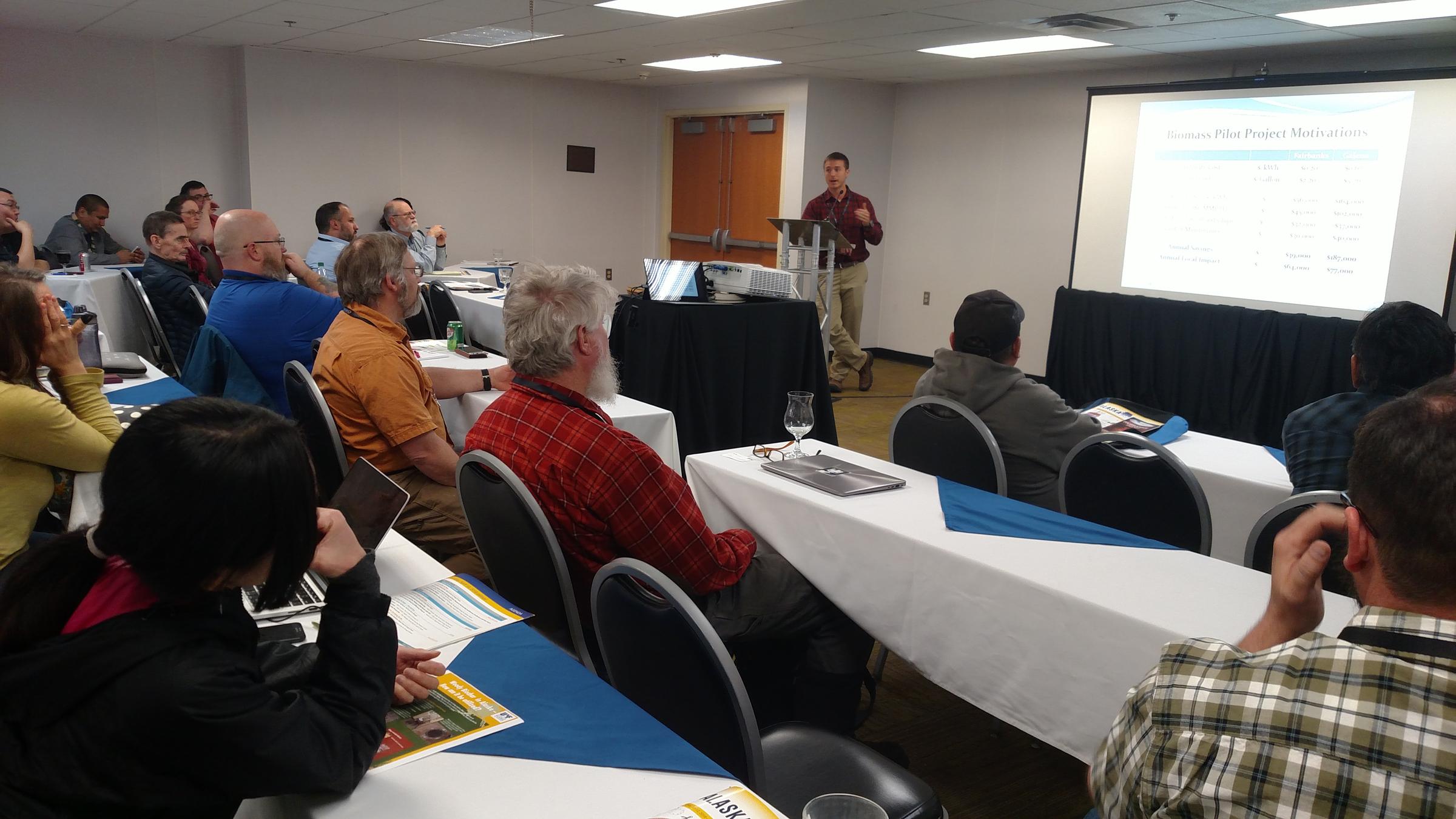
About 400 people from around Alaska and elsewhere converged on the Westmark Fairbanks Hotel and Conference Center this week to talk about how residents of the state’s rural and remote communities can reduce high energy costs during the 20th Rural Energy Conference.
Organizers say turnout for this year’s conference is good and interest is keen in finding solutions to the growing problem of sky-high energy costs in Alaskan communities located far off the grid.
Holdmann is the director of the Alaska Center for Energy and Power at UAF, which helps the Alaska Energy Authority organize the biennial conference.
“What this conference is really about is it’s about bringing people together to share experiences, share stories on what works, what doesn’t work, what direction they’re going,” Gwen Holdmann said.
Holdmann says organizers also try to ensure conferees “have access to the kind of resources that they need to make sure their projects are developed in a successful way.”
Holdmann has attended all 20 of the events, and she says they’ve evolved in recent years as technological solutions to the problem of high-energy costs have emerged.
“Twenty years ago, there was really not that much going on in terms of innovative projects, integration of renewables,” Holdmann said. “There really wasn’t too much happening. There was a lot of interest, but not much was occurring at that time. And over time, that’s really changed.”
Holdmann says earlier conferences focused on improving existing power-generating systems. She says that changed a few years ago when the price of diesel and fuel oil rose sharply, and utilities – especially those that serve smaller communities – started looking for alternatives.
“After we saw the fuel spikes in 2008, there was a huge increase in activity,” Holdmann said.
Holdmann says that’s why conferees are talking a lot more now about employing technologies that improve efficiencies. And about renewable-energy sources such as woody biomass, wind and solar to reduce the use of diesel to generate power. And she says industry is taking notice.
“There’s a lot of interest from companies in using Alaska as kind of a first-adopter, first-mover sort of market,” Holdmann said, “because our energy prices are higher, and so things work here today in ways that they don’t necessarily work from an economic standpoint in other places in the United States right now.”
Renewable-energy expert Chris Rose agrees Alaska has become a leader in improving the microgrids that distribute power to small isolated communities. But he says Alaska is still catching up on using alternative energy to generate heat and power.
“In the Lower 48 and in much the rest of the world, renewable energy is actually mainstream,” Rose said. “It’s moved further and faster than even in places in Alaska.”
Rose is executive director of the Renewable Energy Alaska Project. He says the state has more than 70 alternative-energy technology projects. And he says the growing use of those technologies is reflected in the presentations being given at the conference – and the conversations going on in the hallways.
Rose says those conversations focus on “how to make those projects better. How are they performing? What can we do on the human-capacity side to make sure that we’ve got the right operations and maintenance? What can we be doing on an ongoing basis to update control systems and marry the diesel engines to the renewable-energy project, whatever that might be?”
Both Rose and Holdmann agree that Alaskans will have to leverage the state’s growing reputation as a proving ground for microgrids and renewable energy, because state and federal funding, like the Alaska Energy Authority’s Renewable Energy Fund, has dried up. So, Holdmann says Alaskans must look to the private sector.
“Some of our rural communities have the highest energy costs anywhere in the United States,” Holdmann said. “And while that’s a real challenge for us, it actually presents this opportunity in terms of being able to test new technologies, really gain expertise in that area and potentially be able to leverage our expertise as Alaskans into other emerging places.”
The Rural Energy Conference continues through noon Thursday at the Westmark.
Tim Ellis is a reporter at KUAC in Fairbanks.




